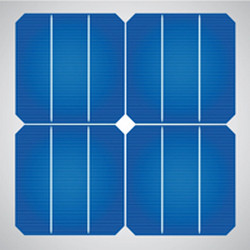Nanomaterials for enhanced solar cells
Multi-layers of silicon (Si) nanocrystals (NCs) in a dielectric matrix allow for band gap engineering by controlling NC size and density. This enables fabricating solar cells with an optimised band gap, including tandem structures. These combine multiple cells with different absorption bands and consist of non-toxic and abundant materials that are compatible with Si-processing technology. The EU-funded project 'Silicon nanodots for solar cell tandem' (NASCENT)(opens in new window) realised novel all-Si tandem solar cells with a tunable gap material as the top sunlight absorber. For the latter, the project successfully fabricated quantum dots made of Si NCs. Understanding electrical transport and recombination mechanisms in these newly developed nanomaterials was fundamental for making the suitable tandem solar cell structures. To help with this, scientists used advanced modelling and characterisation methods of active Si NCs and the matrix material. Through these, the team better comprehended the relationship between growth parameters, material electrical and optical properties, and device properties. This information was used to enhance the quantum dot material quality by developing more effective post-deposition treatments (defect annealing and hydrogen passivation) for the absorber layers. It also helped to improve the material growth processes, leading to a much lower defect density within the material. Project activities resulted in the development of solar cell demonstrators. Researchers were able to determine the influence of the developed technologies on the cost effectiveness of the solar cells. In service, the new solar cells will overcome the efficiency limitations of conventional ones, reaching over 20 %. In turn, greater efficiency will result in less carbon dioxide emissions and better air quality for EU citizens.







